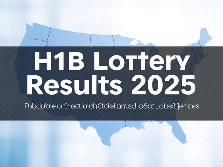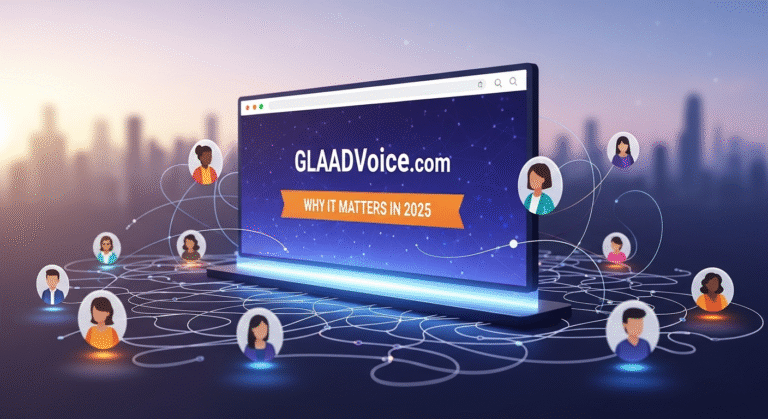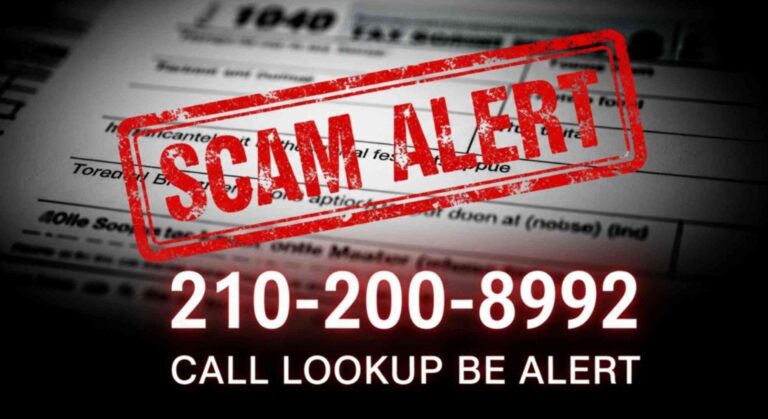
Hitting Refresh Until Your Fingers Hurt: Your Real-World Guide to H1B Lottery Results & What Comes Next (2025 Update)
Lottery Results: The Agonizing Wait, The Elusive Announcement, and Navigating What Comes Next
Let’s be real. If you’re reading this, chances are high you’ve spent weeks, maybe months, in a state of low-key anxiety mixed with desperate hope. You’ve submitted your H1B registration (or your employer has), paid the fee, and now… you wait. And refresh. And check forums. And refresh again. The H1B lottery results season is a uniquely stressful experience, a digital purgatory where careers and life plans hang in the balance of a random selection algorithm run by USCIS.
As someone who’s navigated the labyrinthine world of U.S. immigration for years, both personally for clients and professionally dissecting its trends, I get it. The lack of transparency, the shifting timelines, the sheer randomness – it’s enough to drive anyone a little batty. In 2025, while some processes have evolved (hello, online accounts!), the core uncertainty of the lottery remains. This post isn’t just dry facts; it’s the guide I wish existed when I first started wrestling with this system. We’ll cut through the noise, explain how the H1B lottery results actually unfold in the real world (not just theory), how to interpret what you see (or don’t see), and crucially, what actionable steps you can take once that status changes. Breathe deep. Let’s demystify this chaos.
Understanding the H1B Lottery: It’s More Than Just Luck (But Luck Plays a Huge Role)
Before we dive into the nail-biting world of results, let’s quickly ground ourselves in why this lottery exists. The h1b lottery results visa is the primary pathway for U.S. employers to hire highly skilled foreign professionals in “specialty occupations” – think tech, engineering, finance, medicine, research, and more. Congress sets an annual cap. For the regular cap, it’s been 65,000 visas for years. There’s an additional 20,000 set aside for those with a U.S. master’s degree or higher (the “Master’s Cap”). Simple supply and demand? Unfortunately, demand has consistently dwarfed supply for over a decade.
This is where the lottery comes in. When USCIS receives more registrations during the initial window (typically early March) than there are visas available under the caps, they run a random selection process – the infamous lottery. The goal is fairness, but the outcome feels incredibly arbitrary to the thousands of qualified individuals and companies left out each year. The odds fluctuate yearly based on registration volume. For perspective, here’s a snapshot of recent demand:
| Fiscal Year | Regular Cap Registrations | Master’s Cap Registrations | Total Registrations | Selection Rate (Approx.) |
|---|---|---|---|---|
| FY 2023 | ~ 310,000 | ~ 127,000 | ~ 483,000 | ~ 26% |
| FY 2024 | ~ 350,000 | ~ 140,000 | ~ 758,000* | ~ 15% |
| FY 2025 | ~ 470,000 | ~ 190,000 | ~ 700,000* | ~ 14-16% (Estimated) |
(Note: FY2024 & 2025 saw significant numbers of duplicate registrations from single beneficiaries, inflating the total count but not necessarily the unique beneficiary count. USCIS has implemented stricter measures to combat this, including beneficiary attestations in FY2025, aiming for a cleaner pool).*
The key takeaway? It’s fiercely competitive. A registration isn’t a guarantee of consideration; it’s merely an entry ticket into a high-stakes raffle. Understanding this context makes the wait for H1B lottery results feel slightly less personal, though no less stressful.
The 2025 H1B Lottery Timeline: When Should You Actually Expect News?
This is arguably the question that causes the most sleepless nights: “When will they announce the H1B lottery results?” Unlike a scheduled product launch, USCIS operates on its own internal timeline, influenced by the volume of registrations, system checks for fraud, and bureaucratic processes. However, based on historical patterns and the specific framework established for the electronic registration system, we can outline a realistic window:
-
Registration Window: This is fixed. For FY 2025 (covering petitions filed for work starting October 1, 2024), the initial registration period opened at noon Eastern on March 6, 2024, and closed at noon Eastern on March 22, 2024. This happened. No surprises here.
-
The “Quiet Period”: This is the excruciating part. Immediately after the registration window closes, USCIS enters a processing phase. They de-duplicate entries (especially crucial after the issues in FY2023/FY2024), run preliminary checks for validity and completeness, and prepare their systems for the random selection. Historically, this period lasted 1-3 weeks after the close of registration. In recent years, especially with higher volumes and fraud scrutiny, it’s stretched towards 4-5 weeks.
-
The Lottery Run & Initial Notifications: USCIS doesn’t announce a specific “results day.” Instead, they run the random selection process internally. Crucially, they only notify employers (or their designated attorneys) whose registrations were selected via their online USCIS registrant accounts. There is no mass public announcement or list published. Notifications typically start appearing in employer/attorney accounts within a few days after the lottery is run. For FY 2025, based on trends and official hints, the bulk of initial selection notifications landed in the last week of March 2024 and the first week of April 2024. Some stragglers might appear slightly later.
-
The “Selection Period” & Potential Subsequent Lotteries: USCIS initially selects enough registrations to meet the cap, anticipating that not all selected registrations will translate into filed petitions (due to job changes, employer decisions, petition errors, etc.). If, after the initial filing period (typically 90 days from notification), they haven’t received enough valid petitions to meet the cap, they may run a second (or even, rarely, a third) lottery from the remaining pool of eligible registrations. For FY 2025, a second lottery was confirmed by USCIS, with notifications going out in late July 2024.
How to Check Your H1B Lottery Status: Decoding Your USCIS Account
Okay, the notifications are going out. How do you, the beneficiary (the prospective employee), find out? You don’t get a direct notification from USCIS. The status update happens solely in the employer’s or their attorney’s USCIS online account used for the initial registration. Here’s the practical flow:
-
Employer/Attorney Access: The legal representative or HR contact who submitted the registration logs into the USCIS registrant account.
-
Status Check: Within the account portal, they navigate to the specific registration(s) they submitted. Each registration will display one of the following statuses:
-
Submitted: This means the registration was successfully entered into the system but has not yet been selected in any lottery run to date. It remains eligible for potential future lotteries within the same fiscal year cycle (e.g., FY2025).
-
Selected: Congratulations! This means the registration was picked in the lottery. This status grants the employer permission to file a full h1b lottery results petition on your behalf within the designated filing window (usually 90 days from the selection notice date).
-
Denied: This is rare for the initial lottery phase and usually indicates a fundamental problem with the registration itself (e.g., duplicate payment, payment failure, failure to attest for the beneficiary in FY2025, submission by an ineligible entity). It means the registration wasn’t even entered into the lottery pool.
-
Invalidated-Failed Payment: The registration was submitted, but the payment method failed. The registration is invalid and not considered.
-
-
Communication to Beneficiary: This is the critical, often nerve-wracking, step for you. Your status is entirely dependent on your employer or attorney proactively checking their account and then communicating the result to you. There is no automatic notification sent to the beneficiary. This communication lag is a huge source of anxiety.
What “Selected” Really Means (And What It Doesn’t)
Seeing that glorious “Selected” status in your employer’s account is a massive relief and a cause for celebration! But hold the confetti cannon just for a moment. It’s vital to understand what this status actually signifies in the grand scheme of the h1b lottery results process:
-
Permission to File, Not Approval: This is the single most important point. “Selected” means your registration was chosen in the lottery. It grants your employer the right to file a complete and detailed H1B petition (Form I-129) on your behalf within the specified filing window (e.g., April 1, 2024 – June 30, 2024, for initial FY2025 selections). It is NOT visa approval. The petition itself must still be meticulously prepared, submitted with all supporting evidence (LCA, degrees, experience letters, job details, etc.), and ultimately adjudicated (approved) by USCIS.
-
The Petition Hurdle: The filing of the full petition is a complex legal process. It requires proving the job qualifies as a specialty occupation, that you possess the required qualifications, and that the employer will pay the required wage (prevailing wage). This stage involves significant legal work and documentation. Petitions can be denied for various reasons – insufficient evidence, errors in the application, issues with the Labor Condition Application (LCA), or if USCIS determines the job/qualifications don’t meet the H1B criteria.
-
Employer Commitment is Key: The “Selected” status is tied to the specific employer who registered you. They must be willing and able to proceed with filing the petition, covering the substantial filing fees (which can run into thousands of dollars), and navigating the process with their legal team. Your selection status does not transfer to another employer. If your original employer decides not to file, or if you change jobs before the petition is filed, that selection is effectively lost (unless the new employer miraculously got you selected separately, which is highly unlikely).
The Emotional Rollercoaster: Coping with “Submitted” or Silence
Let’s address the elephant in the room. The vast majority of registrations will show “Submitted” or remain in limbo without any update for a long time. Not being selected in the initial lottery (or potentially any subsequent ones) is statistically the most likely outcome. This is incredibly difficult news, especially after investing hope and potentially stalling other plans.
-
“Submitted” Status: This means your registration remains active in the system. If USCIS needs to run additional lotteries later in the year to fill the cap (which they did for FY2025), your registration is still eligible for selection. Hope isn’t completely lost until USCIS officially closes the registration period for that fiscal year, usually after the final filing deadline passes without them meeting the cap (which rarely happens these days). Keep communication open with your employer/attorney – they should monitor for any status changes.
-
Total Silence/Lack of Update: Sometimes, employers or attorneys might be slow to check or communicate. If it’s been well beyond the expected notification windows (e.g., mid-April for the initial lottery, August for a potential second), and you haven’t heard anything, it’s reasonable to politely follow up with your point of contact. Ask directly: “Could you please confirm the status of my H1B registration in the USCIS portal?” However, prepare yourself that no news, especially this late in 2025 for FY2025, usually means non-selection.
-
Coping Strategies: It’s okay to feel disappointed, frustrated, or even angry. Talk to your support network – friends, family, others going through the same process (though maybe limit doomscrolling H1B forums!). Explore alternatives with your employer (other visa options like L-1, O-1, F-1 OPT STEM extension, CPT if applicable, or roles in other company offices abroad). Consider long-term strategies like pursuing a higher degree in the US or gaining more specialized experience. The H1B lottery is brutal, but it’s not the only path, even if it feels like it right now.
Crucial Next Steps After a “Selected” Status
Your registration is selected! Fantastic news. Now the real work begins. This is not the time to relax. Prompt and precise action is critical:
-
Immediate Employer Notification & Coordination: Ensure your employer (and their immigration attorney) knows you know you’ve been selected. Confirm they are committed to filing the petition. Discuss timelines immediately.
-
Gather Documents Aggressively: Your employer’s attorney will provide a comprehensive list. This typically includes:
-
Your passport copies (all pages).
-
All diplomas/degrees and official transcripts (especially proving you meet the job’s minimum requirements).
-
Detailed, verifiable letters of work experience from previous employers.
-
Your resume/CV.
-
Any relevant licenses or certificates.
-
Pay stubs or employment verification letters (if currently working).
-
Act swiftly and thoroughly. Delays in providing documents jeopardize the filing.
-
-
Labor Condition Application (LCA): Your employer’s attorney will file the LCA with the Department of Labor (DOL). This certifies the wage and working conditions. It MUST be certified by DOL before the H1B petition can be filed with USCIS. This process alone can take around 7 business days minimum, often longer. It cannot be rushed.
-
Petition Preparation & Filing: The attorney drafts the complex Form I-129 and supporting letter, compiling all evidence. Ensure you review drafts carefully for accuracy (your name, DOB, job title, duties, qualifications, dates). Filing must happen within the exact 90-day window specified in the selection notice. Missing this deadline forfeits the selection. USCIS typically opens filing on April 1st for cap-subject petitions selected in the initial lottery.
-
Premium Processing Consideration: For an additional fee ($2,805 in 2025), your employer can request “Premium Processing.” This guarantees USCIS will take some adjudicative action (approval, Request for Evidence (RFE), denial, or notice of investigation) within 15 calendar days. This can significantly reduce the post-filing anxiety and provide quicker certainty, but it’s an added cost.
Life After Filing: RFEs, Approvals, and the Visa Stamp
You’ve crossed the massive hurdle of filing the petition. Now you enter another waiting phase, but with more defined potential outcomes:
-
Receipt Notice: USCIS will send a receipt notice (Form I-797C) confirming they received the petition. This has a unique receipt number starting with “IOE” (as all filings are now online). Track this number on the USCIS Case Status Online tool.
-
The Adjudication Wait: Standard processing times vary wildly by service center but can take 3-8 months. Premium Processing (if used) triggers the 15-day clock.
-
The Dreaded RFE (Request for Evidence): Don’t panic, but be prepared. USCIS frequently issues RFEs asking for more documentation to prove the job is a specialty occupation, your qualifications, or the employer’s ability to pay. This is where your attorney’s expertise is critical. Responding comprehensively and within the deadline (usually 60-90 days) is essential. An RFE delays the process but doesn’t necessarily mean denial.
-
Approval! (Form I-797 Approval Notice): The golden ticket! This notice means USCIS has approved the petition. If you are outside the US, you can now apply for the actual H1B visa stamp at a U.S. embassy/consulate in your home country. If you are already in the US in a valid status (like F-1 OPT), the approval notice might include an I-94 authorizing your change of status to H1B effective October 1st (or the petition’s start date).
-
Visa Stamping (For Those Abroad): Schedule an interview at the U.S. consulate. Prepare thoroughly (passport, approval notice, DS-160 confirmation, visa fee receipt, supporting docs as per consulate instructions). Approval at the interview grants the visa stamp in your passport. You can then enter the US up to 10 days before the H1B start date.
-
Denial: While devastating, understand the reason. Consult immediately with your attorney about potential appeal options (Motion to Reopen/Reconsider) or alternative strategies.
Beyond the Lottery: Alternatives and Future Planning
Not selected? It feels like a door slamming shut, but it’s often just a detour. Here’s a pragmatic look at paths forward:
-
Discuss Alternatives with Your Current US Employer:
-
L-1 Visa: If your employer has offices abroad, transferring to a related entity for at least one year could make you eligible for an L-1 (intracompany transferee) visa to return to the US.
-
O-1 Visa: For individuals with “Extraordinary Ability” in sciences, arts, education, business, or athletics. Requires significant evidence but bypasses the cap.
-
TN Visa: For Canadian and Mexican citizens in specific professions listed under USMCA (formerly NAFTA).
-
F-1 OPT Extensions: If currently on F-1 OPT, particularly STEM OPT, maximize that time. Use it to gain experience and potentially become a stronger candidate for cap-exempt H1Bs or future lotteries.
-
Cap-Exempt H1Bs: Explore positions with employers exempt from the cap: institutions of higher education, affiliated non-profits, government research organizations, or non-profits connected to higher education. These can be filed anytime.
-
-
Consider Roles with Employers Abroad: Many multinational companies have significant operations outside the US. Gaining experience there can strengthen future L-1 or H1B applications.
-
Pursue Advanced Degrees: A U.S. Master’s or PhD not only qualifies you for the Master’s Cap (slightly better odds) but also grants another period of F-1 OPT and potentially STEM OPT.
-
Plan for Next Year: If staying with your current employer is viable, start preparing early for next year’s registration cycle. Ensure your qualifications and job description are meticulously aligned. Discuss strategy with your employer.
Conclusion: Navigating the Uncertainty with Realistic Hope
The wait for H1B lottery results is a uniquely modern form of torture, blending bureaucratic opacity with profound personal stakes. In 2025, while the online system offers efficiency, the fundamental randomness and high competition remain daunting. Understanding the process – the likely timeline, how to interpret statuses (or the lack thereof), the critical difference between selection and approval, and the concrete steps required after a win – is your best armor against the anxiety.
If you were selected, congratulations! Now channel that energy into meticulously supporting the petition process. If the result wasn’t what you hoped for this year, allow yourself to feel the disappointment, but don’t let it define your trajectory. Explore the alternatives, strategize with your employer, and remember that countless talented professionals have navigated this setback and found successful paths forward, both within and outside the h1b lottery results system. The lottery is a moment in time, not the final verdict on your career or potential. Stay informed, stay proactive, and keep building your future, one step at a time.
FAQs: Your H1B Lottery Results Questions Answered (Plain Talk)
1. Okay, seriously, when do results ACTUALLY come out? Like, a specific date?
Nope, USCIS doesn’t give us a calendar invite! Based on the last few years (including 2025), expect the first wave of “Selected” statuses to hit employer accounts roughly 3-5 weeks after the March registration window closes. That usually means late March or early April. They trickle in over a few days, not all at once. If there’s a second lottery (like there was in July 2024 for FY2025), that’s even more unpredictable, often happening months later if initial filings fall short.
2. How do I check MY status? Do I get an email or something?
Here’s the frustrating part: You don’t get a direct notification from USCIS. Only the employer (or their immigration lawyer) who submitted your registration can see the status (“Submitted,” “Selected,” etc.) in their special USCIS online account. Your job is to stay in close contact with your HR person or the attorney handling your case. Politely ask them to check the account and let you know as soon as they see an update. Don’t rely on them remembering proactively – a gentle nudge after the expected notification period isn’t unreasonable.
3. My status still says “Submitted” in late 2025. Does that mean I still have a chance?
For the current fiscal year (FY2025, covering registrations submitted in March 2024), the window for additional lotteries is likely closed by now (Fall 2025). USCIS runs subsequent lotteries only if they need more petitions to fill the annual cap after the initial filing period ends. They announce when the cap is met. If it’s met and your status is still “Submitted,” it means you weren’t selected this year. “Submitted” status doesn’t carry over to next year’s lottery (FY2026).
4. My registration was Selected! Am I guaranteed the H1B visa now?
Big, important NO. “Selected” only means your employer can file the full H1B petition. It’s like getting a ticket to enter the real competition. The petition itself (Form I-129) is a massive application requiring tons of proof – about the job, your qualifications, the salary, everything. USCIS can still deny it for many reasons. Think of “Selected” as permission to take the final exam, not a passing grade.
5. What happens if I change jobs after my registration is Selected? Can the new employer use it?
Unfortunately, no. The “Selected” status is glued to the specific employer who registered you. If you switch jobs before that employer files the petition, the selection is basically void. Your new employer would need to have separately registered you and had you selected under their name for it to count. This is why it’s crucial not to jump ship until the H1B petition tied to your selection is actually filed and approved.






